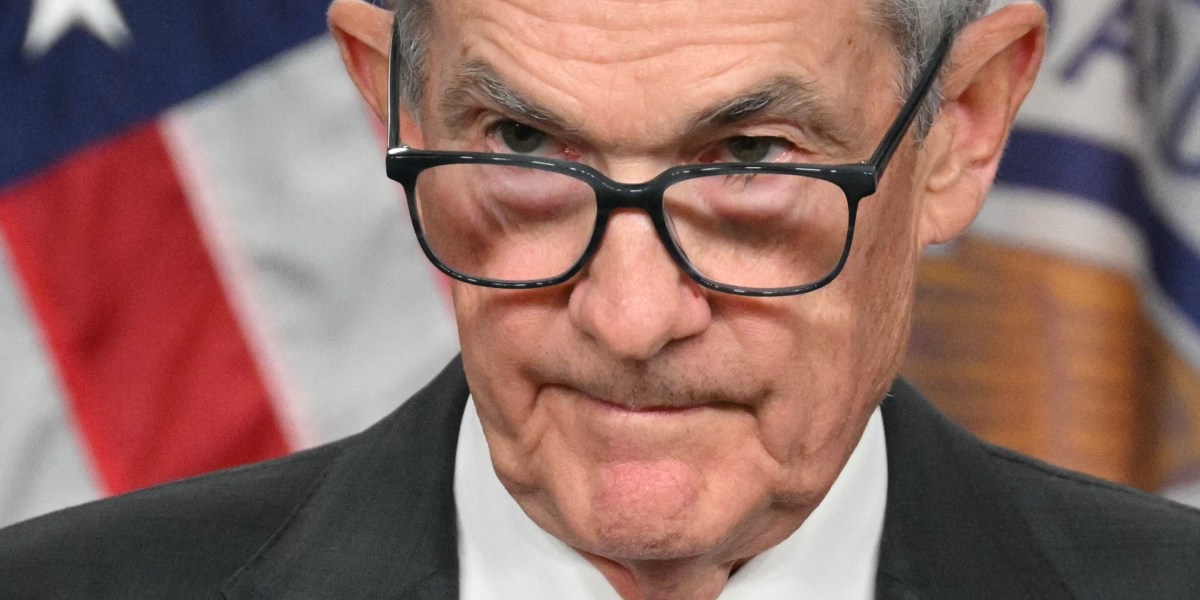This post was originally published on this site
https://fortune.com/img-assets/wp-content/uploads/2024/03/GettyImages-2092446005.jpg?w=2048
National debt is fast becoming the thorn in the side of the American economy that nobody wants to extract—and it will continue to damage the economy until the nation is facing down a financial crisis and 10 years of stagnation.
That is increasingly the opinion of a growing number of experts who are sounding the alarm on the pace at which the U.S. government is gathering debt. Importantly, they fear the debt will mean the country will not be able to afford necessary borrowing in the future, in addition to the funds needed to service existing debt.
Among the ranks of those in the concerned camp are Fed chairman Jerome Powell, JPMorgan Chase CEO Jamie Dimon, <a href=”https://fortune.com/2024/02/06/bank-of-america-ceo-brian-moynihan-national-debt-problem/#”>Bank of America CEO Brian Moynihan, Blackrock CEO Larry Fink and Wharton vice dean Joao Gomes.
Their outlook is evidenced by a March report from the Congressional Budget Office (CBO). The CBO estimates that by 2054 public debt will represent 166% of GDP, reaching $141.1 trillion.
Currently the nation’s $34 trillion debt is approximately 99% of GDP and, according to the CBO, will steadily increase over the next 30 years. In the near term, the CBO expects debt as a percentage of GDP to exceed the record peak of the Second World War by 2029.
This mounting debt, the CBO writes, “would slow economic growth, push up interest payments to foreign holders of U.S. debt, and pose significant risks to the fiscal and economic outlook; it could also cause lawmakers to feel more constrained in their policy choices.”
The report goes on to add that the likelihood of a financial crisis is increasing as a result of growing debt, something which would cause interest rates to spike and, if paired with higher inflation, “could erode confidence in the U.S. dollar as the dominant international reserve currency.”
The outlook from the U.S. Government Accountability office (GAO) isn’t much better. A report released last month said the government is facing an “unsustainable” fiscal path which poses a “serious” threat to economic, security and social issues if unaddressed.
The GAO advise congress should make “difficult budgetary and policy decisions to address the key drivers of federal debt and change the government’s fiscal path,” adding: “The sooner actions are taken to change the long-term fiscal path, the less drastic they will need to be.”
As evidence of a fantastically complex fallout piles up, one might assume it will take an equally complicated approach to prevent it. Economists say that’s not the case—but that’s only if they believe it’s an issue at all. The hardest problem is precisely that: getting enough people to listen.
A sudden reckoning
Wharton’s Joao Gomes has been making his concerns about the level of national debt known for some time now, and last week—following an interview with Fortune—he sat in front of the U.S. senate committee on the budget and warned them of a train wreck ahead.
The vice dean of research at the University of Pennsylvania’s Wharton School previously argued too few high-profile individuals were taking the matter seriously, but as an up-and-coming economist he felt compelled to step away from the pack to sound the alarm.
“The coming fiscal crisis will be triggered by a sudden loss of confidence by the general public in the federal government’s finances and on those tasked with managing them,” Gomes told chairman Sheldon Whitehouse and ranking member Chuck Grassley. “The projected path for the U.S. federal debt makes this… inevitable in the not too distant future.”
Among the fallouts of the crisis Professor Gomes foresees is a sharp decline in the value of the dollar as interest rates spiral higher. He also believes inflation will spike as the government is forced to roll back on social programs to wrestle the deficit under control.
“These measures would have a further devastating effect in the economy, leading to a decade long stagnation,” Professor Gomes explained. “Given our projected demographic challenges, many older, and marginally attached, workers are likely to leave the labor force never to return again.”
‘Changing this future is not that difficult’
Professor Gomes outlines there are two well-known options to rebalance the variables: increase growth or cut spending. The former is by far the most preferable, Gomes said, but wouldn’t accelerate quick enough to do the job.
Even then, “the required fiscal correction is not drastic,” he added. “We certainly do not need to repay any part of the outstanding debt to prevent a crisis. In fact, government debt can continue to grow steadily over time without posing an immediate threat to the nation’s fiscal solvency—as long as the yearly deficits are not excessive.”
A fiscal adjustment of around 1.4% of GDP—or $400 billion—spread over two or three years would nip the issue in the bud, Gomes estimates.
However without a course correction a fiscal crisis is likely to occur in 2030, said Gomes, or as early as 2025 if the next administration rolls out an “expensive fiscal package that relies on implausibly rosy economic assumptions.”
Regardless, warns Gomes: “It’s consequences will be severe and leave lasting—probably irreversible—scars on our economy and society.”
Redoing the maths
Economists are increasingly revising the bill future generations will have to foot in order to pay for the fiscal outlays of governments way back when. However, that comes with a major caveat: a global pandemic.
For example, in 2019 the CBO projected U.S. public debt by 2049 would be 144% of GDP—by March’s estimate that figure stands at more than 150%.
However the ratio—and corresponding forecasted debt figure—does fluctuate depending on who you ask. Even the CBO as recently as September 2023 projected the figure to be higher—estimating an 153% debt-to-GDP ratio by 2053.
The GAO puts debt at 200% of GDP by 2050, while the Penn Wharton Budget Model projects 190% of the size of the economy by the same year.
Balance is not the goal
Like Wharton’s Gomes, Russell Price, chief economist at financial services firm Ameriprise Financial, is growing increasingly nervous about national debt while also fielding more questions on the topic from retail investors.
The expert at the Minneapolis-based company—which has $1.4 trillion in assets under management—added the goal is not to balance the books from one year to the next: “Given the high deficits that we’re spending right now, if we did that in a very short period of time it would cause more economic pain than it would displace.”
Price also sought to unpack inter-generational criticism that high levels of spending now will unfairly burden workers of the future. While social security as we know it only exists because of higher taxes paid by employees in the 1980s, Price outlined, a great deal of spending will be needed in the future to support an aging population.
As a result, younger workers have a vested interest in making sure whatever spending is agreed upon now is worth their investment in the future. Price explained: “The one thing I point out to retail clients is the debt is never expected to be paid off in full but the burden of higher interest expense… is where the future generations are going to see the value of how much they paid on the promises that were enacted so many years before.”
The other side of the debate
Other, more optimistic, economists believe a crisis as a result of government debt isn’t on the cards, as fiscal stimulus should lead to higher productivity and hence, to a rise in GDP.
Columbia University Professor Brett House is a specialist in macroeconomics and international finance, and falls into the cohort of experts who aren’t losing sleep over national debt.
House reasoned the recent run-up in debt because of the pandemic is an example of how fiscal stimulus can lead to productivity—after all Q2, Q3 and Q4 2023 all saw productivity increases of more than 3% compared to the prior quarter, according to the Bureau for Labor Statistics.
Indeed, the GDP growth of the U.S. since the pandemic has outstripped every other G7 nation—up 7.4% in the latest quarter when compared with Q4 2019. Meanwhile the G7 sits at 4.7% with the EU struggling behind at 3.4%.
“Public debt is justified if it is invested in productivity-enhancing measures that will ensure the economy generates growth that’s required to finance that debt,” House told Fortune.
“Clearly a lot depends on what happens in the wake of the November election,” he added. “On the current trajectory that we’re on right now I do not see a high probability of financial stress or substantial inflation in the U.S.”
While House acknowledged that a debt-to-GDP ratio above 100% would be dangerous for most countries, he added: “The United States is not most countries. It issues all of its debt in U.S. dollars and consistently when we see the world in political or financial crisis, money flows into U.S. treasuries and the bond market as a safe store of value. Because the U.S. issues all of its debt in U.S. dollars it always has the possibility of finding additional buyers for its debt.”
While economists disagree on how much of an issue national debt will be, they do agree on one thing: that the public needs to be involved.
“People who represent labor, people who represent average working people need to be deeply engaged in these conversations,” House said, “because the cuts will most likely fall on them.”




